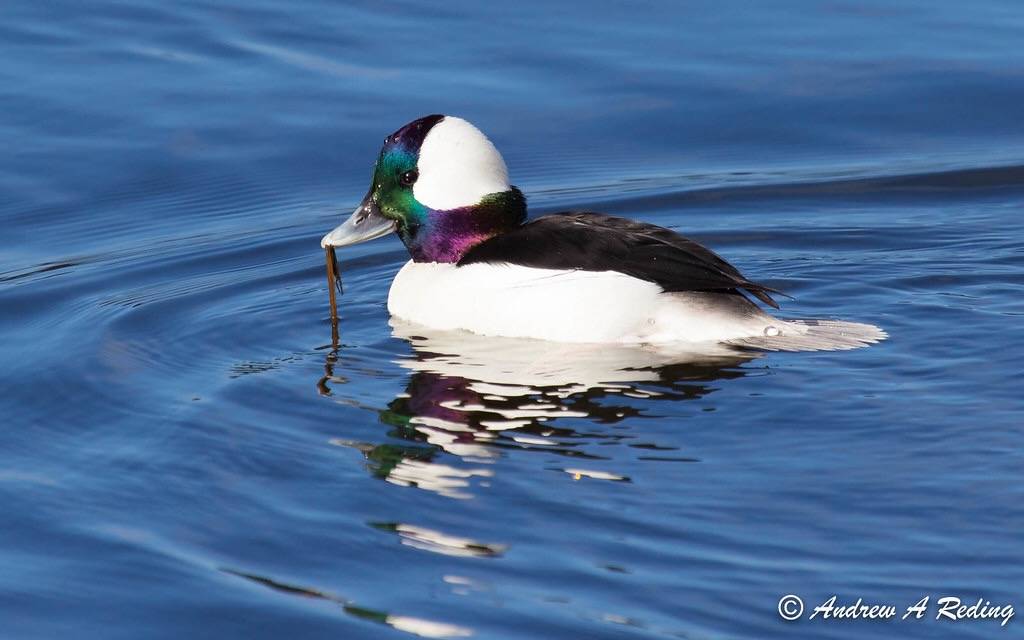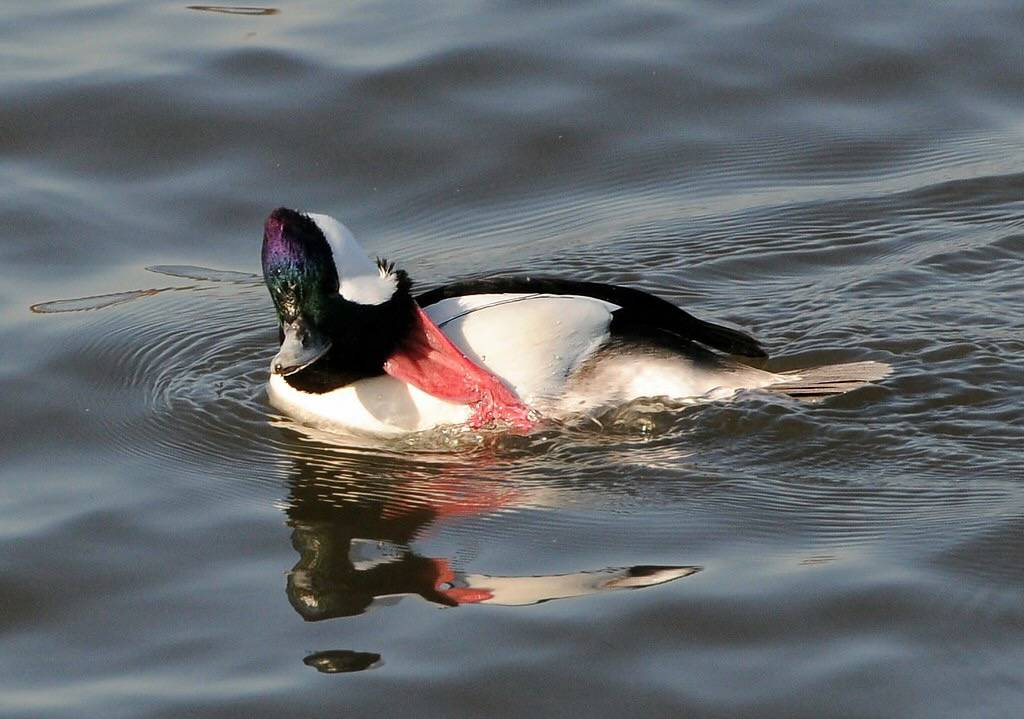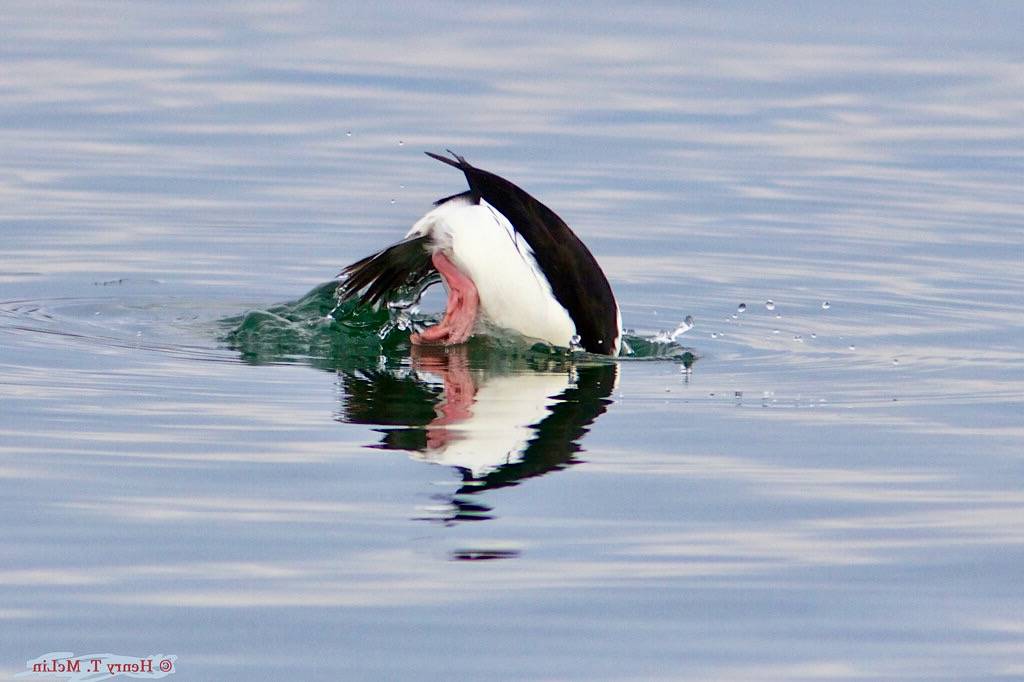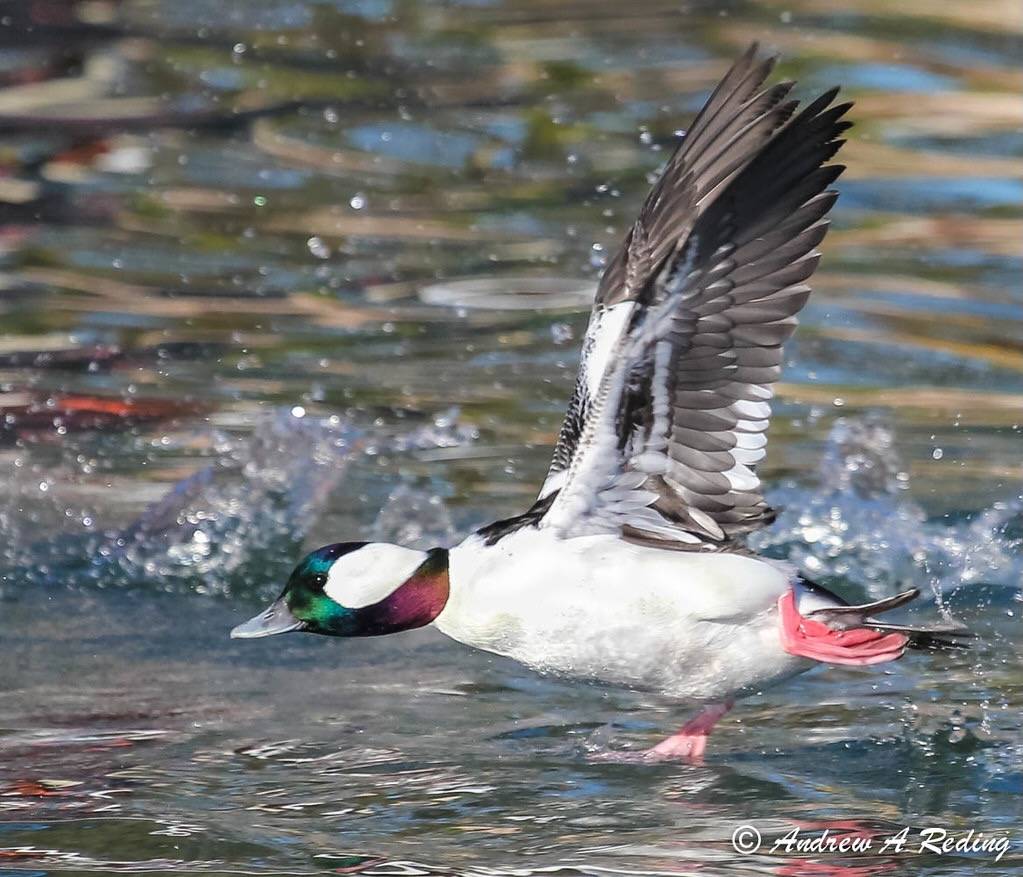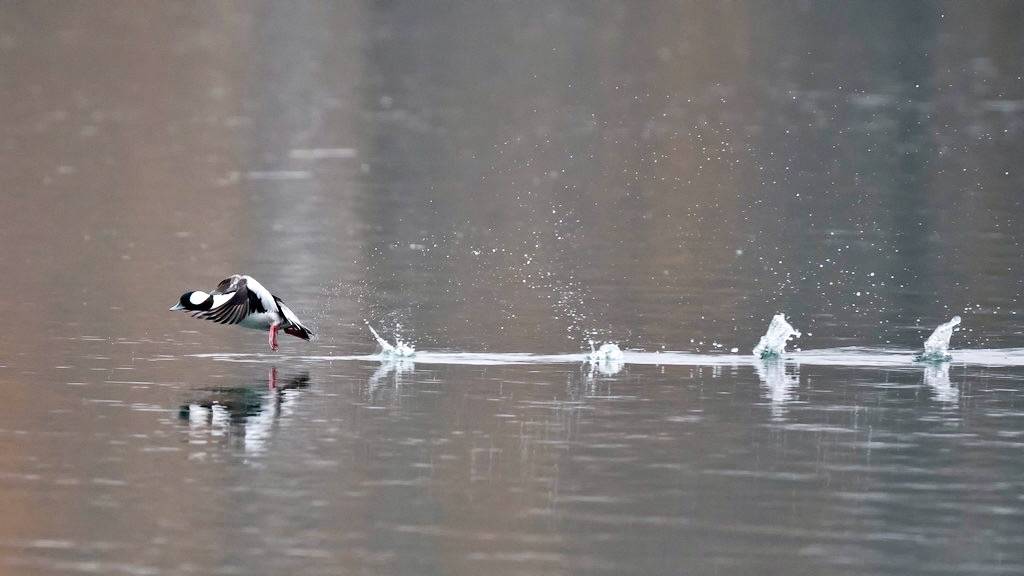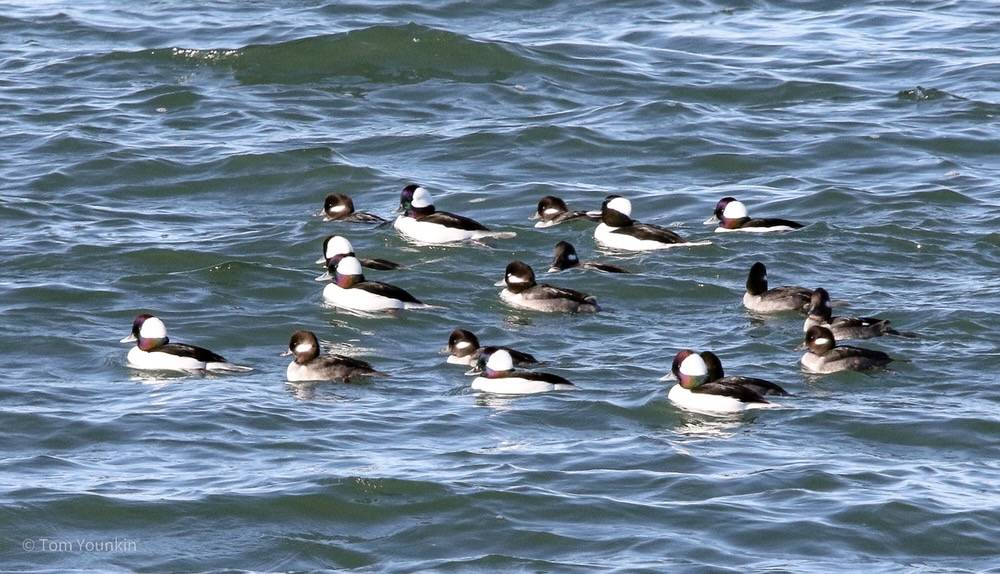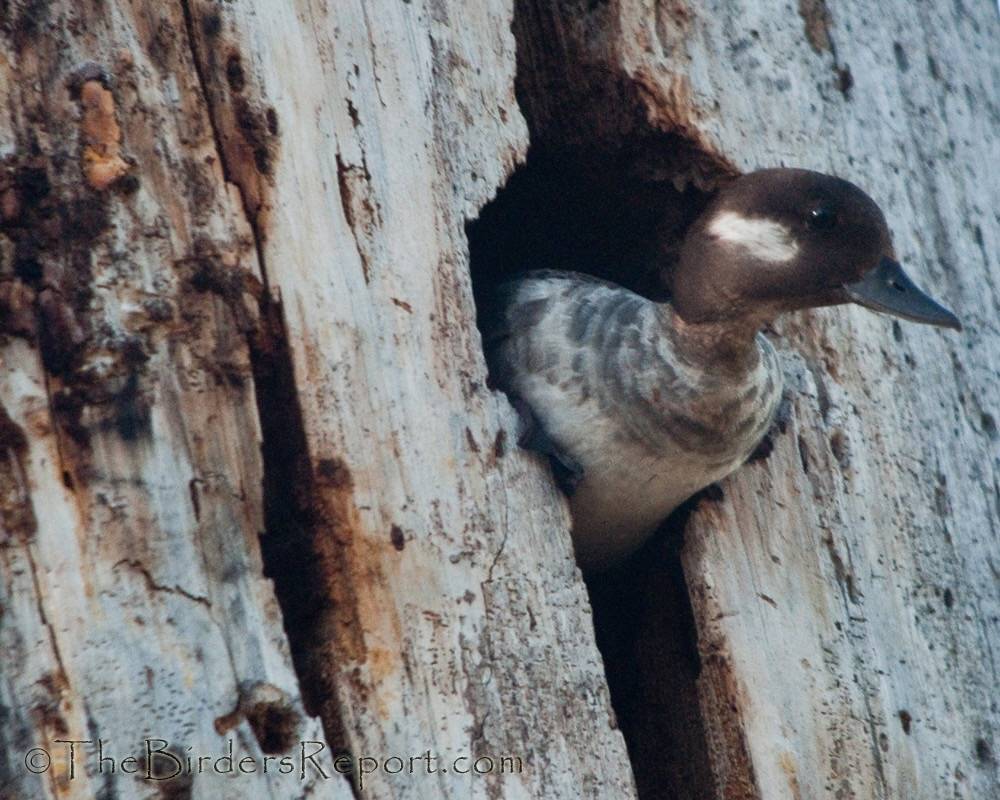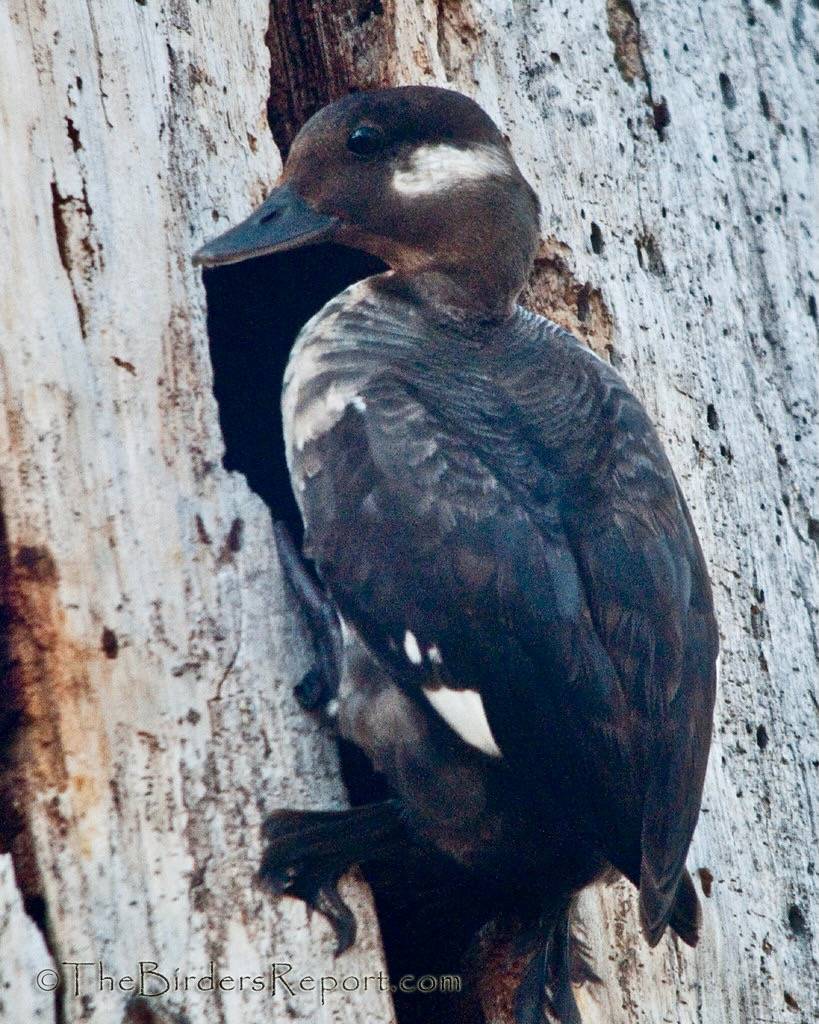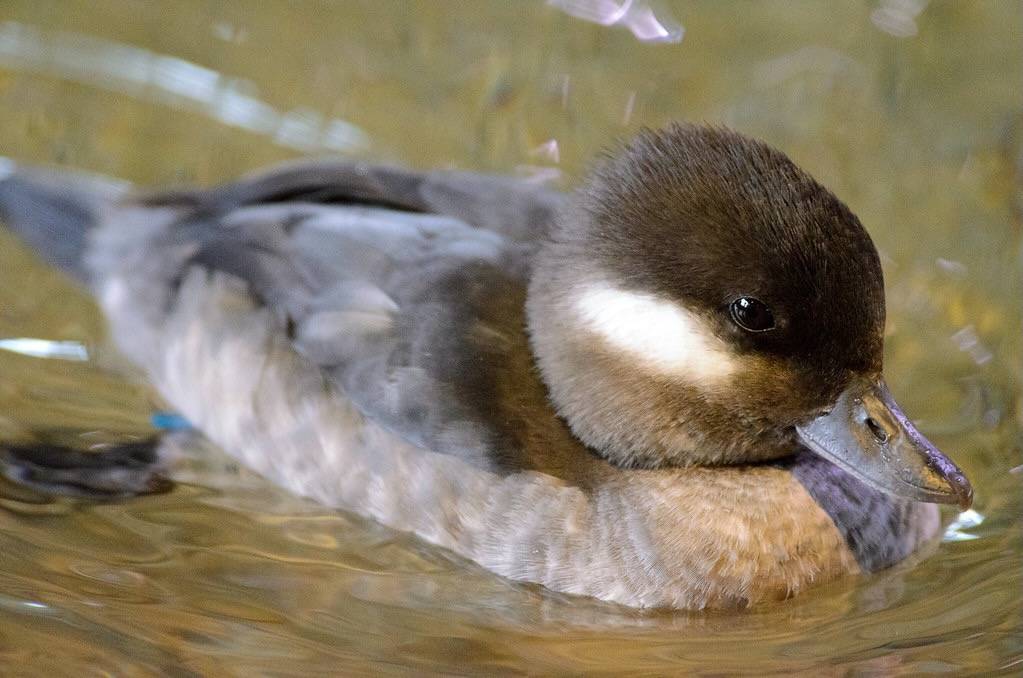Bufflehead
The Bufflehead is the smallest duck wintering at Salter Grove. Small groups can be seen in both North and South Coves but never in numbers as large as some of the other wintering waterfowl.
Its bulbous head appears disproportionately large relative to its small body. Rather than just sitting still in the water, it seems to bob up and down in between quick dives for aquatic invertebrates. Like the Common Loon, which is a much larger bird, the Bufflehead surprisingly needs a long running start to become air-borne.
From a distance, the male may be confused with the somewhat larger Hooded Merganser which also has a similarly large white patch behind the eye. A closer look will show that the invertebrate-eating Bufflehead has a typical wide and flat duck bill whereas the fish-eating merganser has a straight and narrow saw-toothed bill ideal for catching fish.
The quickest way to distinguish between these two species is actually to examine the females present in the raft. The female Bufflehead has a small white cheek patch whereas the Hooded Merganser female has a totally brownish head.
The Bufflehead breeds in northern North America. Unlike other ducks, the Bufflehead is monogamous and stays with the same mate over several years if not for life.
It has the unlikely habit of nesting exclusively in the old nest holes of the Northern Flicker, a large woodpecker that inhabits open areas or edges of boreal forests. The Bufflehead is thus in stiff competition for nesting holes with squirrels, other hole-nesting ducks such as Barrow's and Common Goldeneye, as well as non-duck species like the European Starling, Mountain Bluebird, and Tree Swallow.


